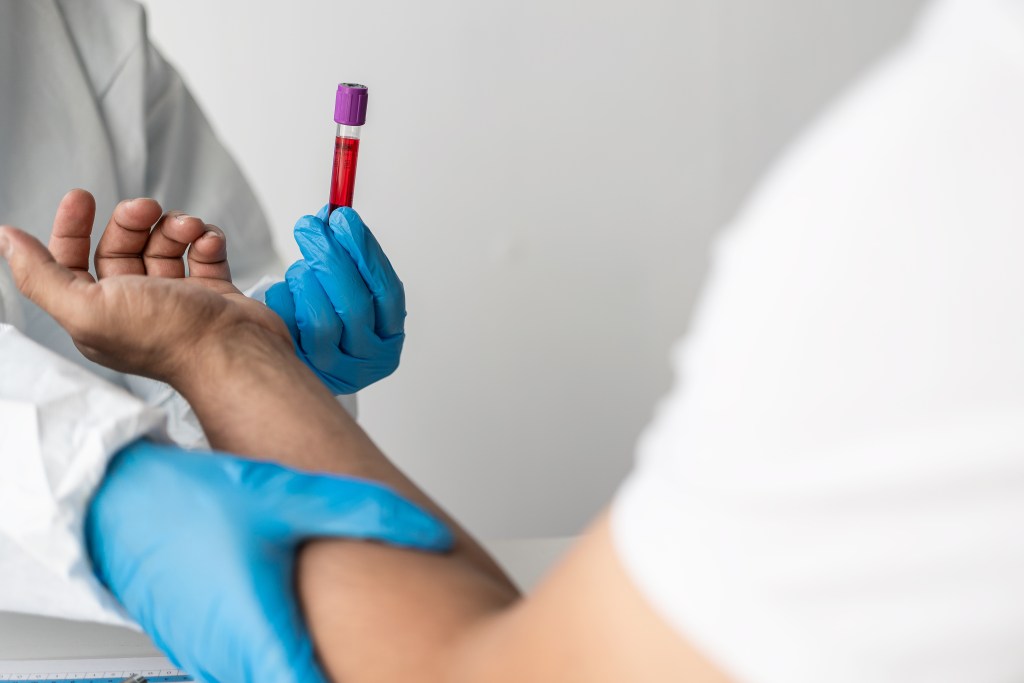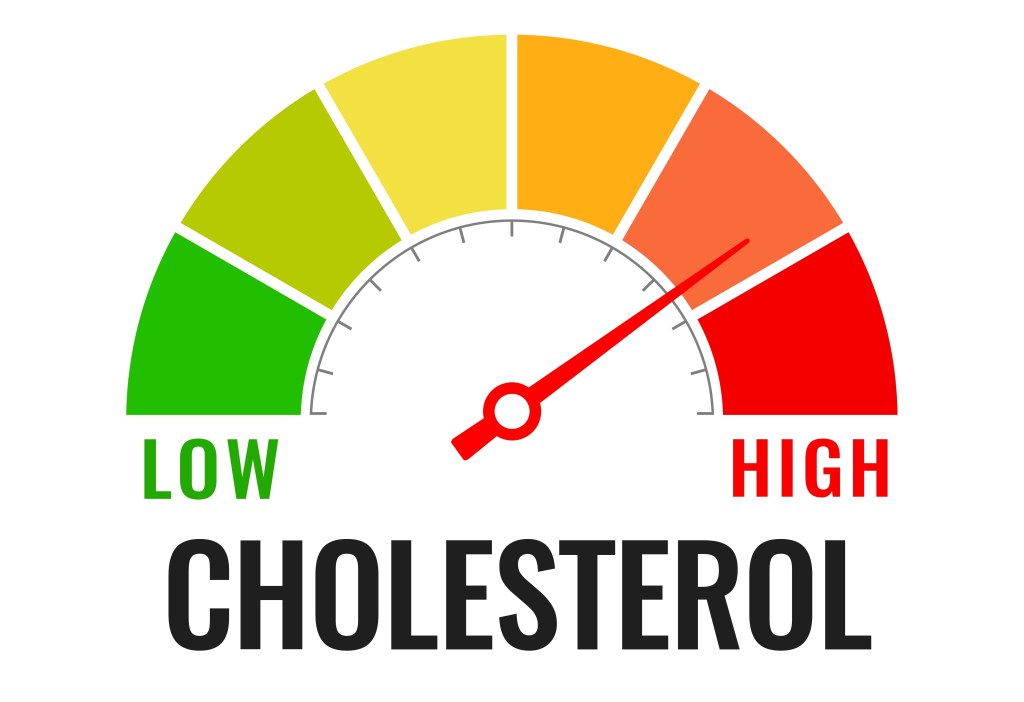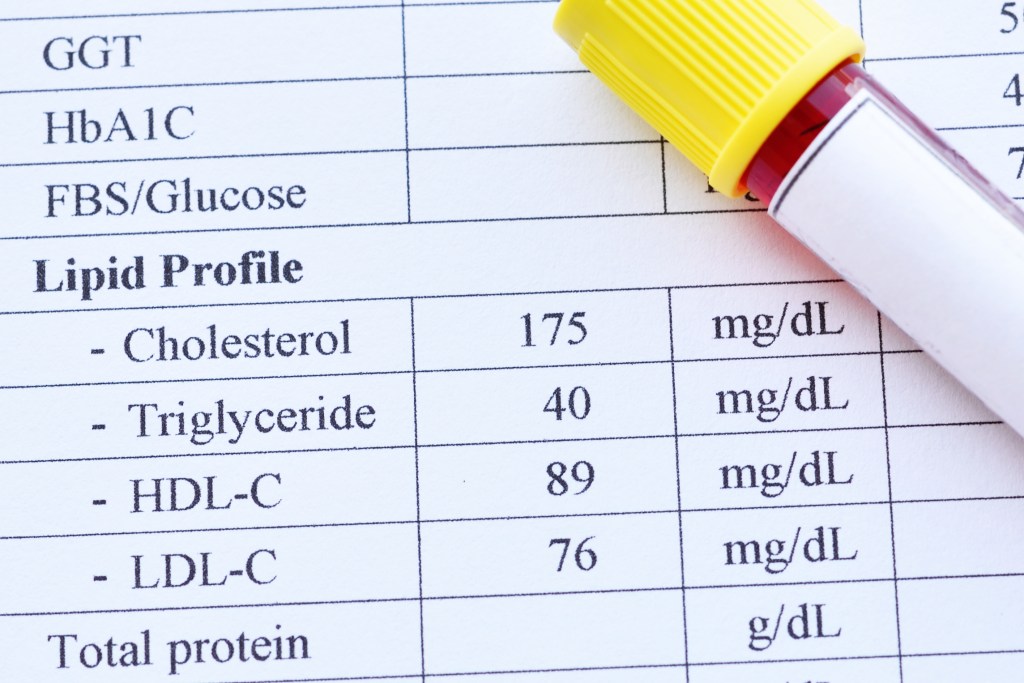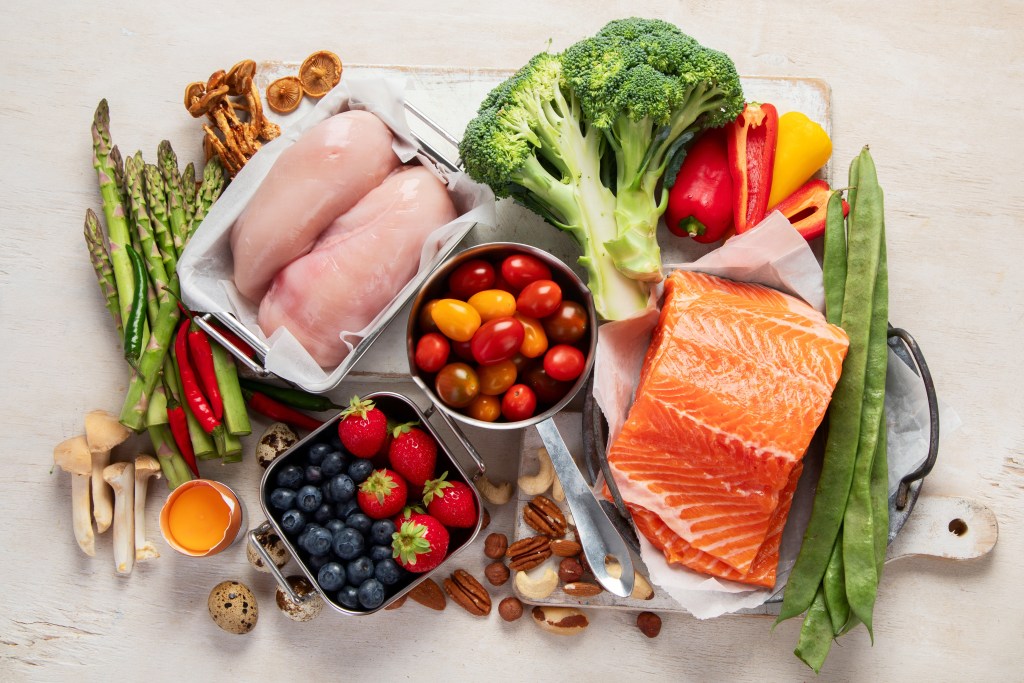At a glance
While cholesterol is vital for hormone production and brain function, imbalanced levels can cause atherosclerosis and increase cardiovascular risk. Understanding your cholesterol numbers and how diet, exercise, and lifestyle habits affect them can help support balanced lipid levels and long-term heart health.
Poor diet and lifestyle habits, such as smoking, alcohol consumption, an ultra-processed diet, obesity, and lack of exercise, can lead to imbalanced cholesterol levels.
Certain types of cholesterol can contribute to fat deposits in the arteries, also known as atherosclerosis, which increases the risk of heart disease, hypertension, heart attack, and stroke.
Learn how to interpret your cholesterol numbers and discover effective strategies to support healthy cholesterol levels naturally.
What is cholesterol?
Cholesterol is a fat-like, waxy substance that’s found in every cell of the body.
The liver produces approximately 80 percent of the body’s cholesterol stores, while the remaining 20 percent, known as dietary cholesterol, is obtained from foods.
Dietary cholesterol can be acquired from nutritious animal-based foods such as eggs, full-fat dairy, and fatty meats. The liver can adjust cholesterol production in response to dietary intake to maintain cholesterol balance.
However, fried, fast, and ultra-processed foods that are high in cholesterol can overwhelm the body’s ability to regulate cholesterol. This explains why these types of food in particular can contribute to a buildup of fat and cholesterol in the arteries.
Plaque buildup in the blood vessels, known as atherosclerosis, causes the arteries to narrow and restricts blood flow, which significantly raises the risk of stroke and heart attacks.
Watch the video below to learn more about reading and understanding your cholesterol levels.
The importance of cholesterol
Cholesterol is widely regarded as detrimental to health. Though high levels can increase the risk of cardiovascular disease (CVD), cholesterol is essential for many vital bodily functions.
Here are four critical functions of cholesterol.
1. Hormone balance
The endocrine glands utilize cholesterol to synthesize steroid and sex hormones, including cortisol, estrogen, and testosterone.
Maintaining hormonal and cholesterol balance is essential for many bodily functions related to metabolism, reproduction, mood, sleep, and other processes, especially as you age.
“Low cholesterol is a key factor for hormonal imbalances and related side effects such as hair loss, reduced sex drive, menopausal symptoms, and erectile dysfunction,” explains Dr. Berg.
2. Digestion and nutrient absorption
Cholesterol plays a vital role in bile production, a digestive fluid produced by the liver that helps the body dissolve fats and absorb fat-soluble vitamins, including vitamins A, D, E, and K.
While too much cholesterol can contribute to the formation of gallstones, too little can lead to low bile acid and subsequent nutrient deficiencies, digestive issues, and fat malabsorption.
3. Cell membrane function
Cell membranes, which are lipid bilayers that surround cells and separate the interior of the cells from the outside environment, also rely on cholesterol.
Cholesterol is essential for maintaining cellular structure and regulating the fluidity of cell membranes, preventing the walls from becoming too fluid or rigid.
This plays a crucial role in ensuring proper cell function, supporting communication between cells, and facilitating the transport of nutrients and waste in and out of the cell.
4. Brain health and cognitive function
The brain consists of around 50 percent cholesterol, which highlights the importance of maintaining optimal cholesterol levels for brain health and cognitive function.
Cholesterol plays a role in the formation and maturation of synapses, which are structures that facilitate the communication between neurons needed to maintain brain functions such as learning, memory, and motor control.
A study published in the Journal of Alzheimer’s Disease found that lowering cholesterol levels with statin drugs may impair brain function and contribute to cognitive decline and neurodegenerative diseases, such as dementia.1

How is cholesterol measured?
Healthcare professionals evaluate overall cholesterol levels using a lipoprotein or lipid panel, which measures cholesterol blood concentrations in milligrams per deciliter (mg/dL).
These blood tests provide insight into an individual’s total cholesterol levels, which consist of low-density lipoproteins (LDLs), high-density lipoproteins (HDLs), and triglycerides.
Cholesterol tests are typically performed in a fasted state, requiring patients to avoid all food and beverages except water for 8 to 12 hours prior to the blood draw.

LDL, HDL, and triglycerides explained
LDL cholesterol transports cholesterol from the liver to the body’s cells and tissues. It’s often called bad cholesterol, as high LDL levels increase the risk of arterial blockage and heart disease.
However, there are different types of LDL particles, which, depending on their size, may not pose the same level of risk. Smaller, dense LDL particles are more likely to contribute to plaque buildup, while larger, less dense particles may not have the same effect.
Unfortunately, most standard lipoprotein tests don’t evaluate LDL subtypes, providing only one overall value for LDL concentrations.
HDL cholesterol carries excess cholesterol from the arteries to the liver for removal. This explains why it’s commonly referred to as good cholesterol, linked to a reduced risk of arterial plaque formation.
Triglycerides are blood lipids that the body uses for energy or stores in fat cells for later use. When the body receives excess calories from sugar or carbohydrates, the liver converts them into triglycerides and stores them for future energy needs.

What are normal cholesterol levels?
General guidelines recommend that adults over the age of 20 maintain total blood cholesterol levels below 200 mg/dL.
LDL cholesterol levels should be below 130 mg/dL, with an ideal target of 100 mg/dL. For individuals with coronary artery disease (CAD), doctors may recommend lowering LDL to under 70 mg/dL.
The optimal HDL level varies by sex. Men should aim for HDL cholesterol levels above 40 mg/dL, while women are advised to maintain levels above 50 mg/dL to support estrogen production and reduce the risk of heart disease.
In addition to cholesterol, triglyceride levels are also measured to evaluate the risk of heart disease and cardiovascular events. Ideally, a patient’s triglyceride levels should be below 150 mg/dL.
The following blood lipid levels are considered high:
- Total cholesterol: 240 mg/dL or higher
- LDL cholesterol: 160 mg/dL or higher
- HDL cholesterol: Greater than 80 mg/dL
- Triglycerides: Greater than 200 mg/dL
If you are concerned about your cholesterol levels or have questions about how to interpret your results, it’s crucial to consult a healthcare professional for personalized guidance about necessary lifestyle changes or treatments.

Reading your cholesterol numbers
When evaluating your cholesterol numbers, several important factors must be considered in addition to the total, LDL, and HDL cholesterol numbers.
Here’s how to read your cholesterol numbers.
Total cholesterol-to-HDL ratio
The total cholesterol-to-HDL ratio provides a clearer picture of your heart disease and stroke risk as it reflects the balance between harmful and protective cholesterol, helping to assess overall cardiovascular health.
To calculate your total cholesterol-to-HDL ratio, simply divide the total cholesterol number by the HDL cholesterol number.
A ratio above 5:1 indicates an increased risk of heart disease and mortality, while a ratio below 3.5:1 is considered low risk.
Large-buoyant LDL particles
There are two primary types of LDL cholesterol particles: large-buoyant and small-dense, also known as types A and B.
Large-buoyant LDL particles are fluffy and less atherogenic, so they aren’t as likely to penetrate the artery walls and contribute to plaque formation or clotting.
Higher levels of type A LDL have been linked to saturated fat intake from sources such as meat, dairy, and eggs and may not be a cause for concern.
Small-dense LDL particles
Conversely, high small-dense LDL levels increase cardiovascular risk, as they’re smaller and more tightly packed, making it easier for them to penetrate arterial walls.
Elevated small-dense particles are heavily associated with a diet high in sugar and carbohydrates.
Advanced lipid profile tests can reveal the ratio of large-buoyant and small-dense particles in your body. However, you can also estimate particle size by comparing triglyceride levels with HDL concentrations.
High blood triglycerides and low HDL cholesterol levels indicate a higher presence of type B LDL.
If triglycerides are low and in the presence of high HDL cholesterol levels, you are more likely to have type A LDL, and the lower your risk of heart disease.

How to support healthy cholesterol
Maintaining balanced cholesterol levels is crucial in promoting vital physiological processes while reducing the risk of cardiovascular events and premature death.
Here are three ways to support healthy blood cholesterol.
1. Follow a nutritious ketogenic diet
Contrary to popular belief, it’s not a high-fat diet that raises cholesterol levels, but rather a diet rich in carbohydrates and sugars.
This explains why a nutritious low-carb diet such as Healthy Keto® supports healthy cholesterol levels and may benefit those with dyslipidemia and other risk factors for CVD.
A study published in Nutrients found that “…ketogenic-fed rats had an approximately 25% lower body mass, 80% lower levels of serum insulin, 50% lower levels of glucose, 55% lower levels of triglycerides, and 20% lower levels of total cholesterol.”2
It’s important to note that some keto dieters may experience transient elevated LDL cholesterol as their bodies adapt to a high-fat diet.
However, high type A LDL is most common on keto and less concerning than type B LDL, which is associated with a higher risk of heart attack or stroke.

2. Implement a healthy lifestyle
Exercise has been shown to improve cardiovascular health, while a sedentary lifestyle reduces the production of HDL cholesterol and elevates type B LDL, which is linked to atherosclerosis.
Quality sleep is also vital to support healthy cholesterol levels, as sleep deprivation is associated with higher blood cholesterol levels and cholesterol buildup in liver cells.
Additionally, stress triggers inflammation and hormonal changes that can stimulate cholesterol production. Relieving stress through relaxation techniques, exercise, and adequate sleep can help reduce inflammation and support healthier cholesterol levels.
Quitting smoking and limiting alcohol consumption are essential for maintaining balanced cholesterol levels. These substances interfere with the liver’s ability to efficiently remove cholesterol from the bloodstream, thereby contributing to imbalances in cholesterol levels.
3. Utilize natural remedies
Natural remedies, such as bile salts, omega-3 fatty acids, and certain herbs, may help support healthy cholesterol levels in addition to lifestyle and dietary changes.
Bile salts can help the body metabolize fat, convert cholesterol into bile salts, and excrete excess cholesterol through feces.
Omega-3 fatty acids from fish or cod liver oil may also improve lipid profiles by increasing HDL, lowering triglyceride levels, and reducing small-dense LDL particle concentrations.
Additionally, turmeric, which is rich in the polyphenol curcumin, is one of several herbs that help lower cholesterol. Turmeric has been found to lower LDL cholesterol and triglycerides.

When to see a doctor
Information related to cholesterol levels should be discussed with your healthcare provider to determine suitability based on your unique health needs.
According to the National Heart, Lung, and Blood Institute (NHLBI), adults at low risk for developing heart disease and stroke should have their cholesterol levels evaluated every five years.3
In addition, the NHLBI recommends that men aged between 45 and 65 and women between 55 and 65 receive cholesterol screenings annually or biennially, while individuals over 65 should have their cholesterol levels tested annually.
Individuals with triglyceride, LDL, or HDL cholesterol levels outside the optimal range may need more frequent testing to monitor their health.
A doctor may also perform routine testing if you have the following CVD risk factors:
- Family history of high cholesterol
- Heart disease
- Chronic stress
- Low-quality sleep
- Substance abuse or smoking
- Obesity
- Menopause
Additionally, conditions such as chronic kidney disease (CKD), diabetes, and high blood pressure, as well as medications, including beta-blockers and diuretics, can contribute to elevated cholesterol levels and warrant frequent cholesterol screening.
Key takeaways
- Cholesterol is essential for maintaining hormone balance, facilitating nutrient absorption, supporting brain function, and ensuring cell membrane integrity.
- HDL cholesterol helps remove excess cholesterol from the arteries and supports cardiovascular protection.
- High LDL levels, particularly small, dense LDL particles, can raise the risk of atherosclerosis and cardiovascular disease.
- Following a Healthy Keto diet, especially in combination with regular exercise, quality sleep, and stress management, is an excellent strategy to promote cholesterol balance.
- It’s critical to avoid smoking, alcohol, and processed foods to reduce cholesterol imbalances and support optimal heart health.
FAQ
1. What is the normal range for cholesterol levels?
The standard range for low-density lipoprotein (LDL) cholesterol is under 130 milligrams per deciliter (mg/dL). High-density lipoprotein (HDL) cholesterol should be at least 40 mg/dL for men and 50 mg/dL for women to support optimal health.
2. What are alarming cholesterol levels?
Both high and low cholesterol levels can have detrimental health effects, including an increased risk of atherosclerosis, stroke, hormonal imbalances, and reproductive issues.
If your total cholesterol exceeds 240 mg/dL, LDL levels are above 190 mg/dL, or HDL cholesterol is higher than 80 mg/dL or falls below 40 mg/dL for men and 50 mg/dL for women, consult your healthcare provider for guidance.
3. Can cholesterol levels be too low?
Yes, total cholesterol levels are considered low if they fall below 120 mg/dL. Cholesterol plays a vital role in supporting brain function and the structural integrity of cell membranes and is essential for synthesizing sex hormones and bile fluid.
Low cholesterol can lead to symptoms such as hormonal imbalances, digestive issues, fat-soluble vitamin deficiencies, and poor cognitive functions.
4. How do I bring my cholesterol down?
Regular exercise, maintaining a healthy weight, and limiting your intake of processed foods, sugars, and refined carbohydrates are key steps to keeping your cholesterol and triglyceride levels within the optimal range.
5. What is the bad cholesterol?
LDL cholesterol, especially small, dense LDL, is widely known as bad cholesterol as it contributes to plaque buildup in the arteries, which increases the risk of coronary heart disease and stroke.
6. How often should I have my cholesterol checked?
The National Heart, Lung, and Blood Institute (NHLBI) recommends getting your cholesterol checked every five years if you’re at low risk for heart disease and stroke.
Individuals at high risk are encouraged to undergo more frequent evaluations. Speak with your healthcare provider to determine a testing schedule tailored to your specific needs.
7. Is high cholesterol on keto normal?
Yes, keto dieters may experience elevations in LDL cholesterol due to consuming more saturated fats. However, reviewing your test results closely is recommended to determine which LDL particle type is elevated.
Type A LDL particles, common in those following keto, are less concerning than small, dense LDL particles, which significantly increase the risk of heart attack and stroke.
Sources
- https://pubmed.ncbi.nlm.nih.gov/22269162/ ?
- https://pmc.ncbi.nlm.nih.gov/articles/PMC5452247/ ?
- https://www.nhlbi.nih.gov/health/blood-cholesterol/diagnosis ?

















